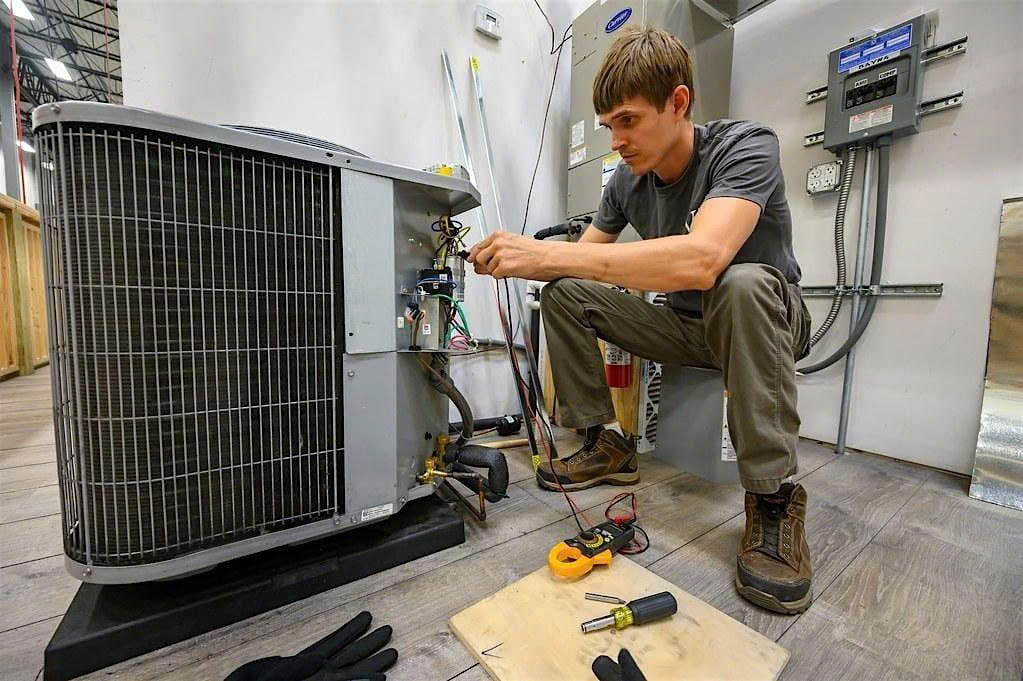A Deep Dive into the HVAC Installation Role
The HVAC installation process is a lot more complex than it looks. It requires a deep understanding of electrical systems, refrigeration principles, ductwork, and safety protocols. An installer isn’t just a laborer; they are a problem-solver who must assess a space, design a system that fits, and then meticulously build it from the ground up. The work can be physically demanding—crawling into attics, navigating tight crawl spaces—but it’s also a chance to use your hands and your brain to solve real-world problems.
The demand for skilled HVAC installation professionals is consistently high. The U.S. Bureau of Labor Statistics projects a strong job market for HVAC mechanics and installers, driven by the ongoing need to replace and service older systems and the move towards more energy-efficient technology [Source: U.S. Bureau of Labor Statistics, 2023]. This means that for a dedicated professional, a career in this field offers a level of job security that is hard to find in many other industries.
Practical Applications and How to Get Started
So, how do you get your start in HVAC installation? The most common path is through an apprenticeship or a trade school program. An apprenticeship is often the best choice, as it combines on-the-job training with classroom instruction. You learn by doing, working alongside a seasoned professional who can show you the ropes and mentor you. This is a crucial advantage, as it gives you real-world experience and allows you to earn a paycheck while you learn.
When you’re ready to start, a strong resume should highlight any experience you have with tools, manual labor, or any technical work. A genuine enthusiasm for the trade and a willingness to learn are also essential. You will also need to get your EPA Section 608 certification, which is legally required to work with refrigerants and is a fundamental part of a successful career in HVAC.
The Story of a Career: From Helper to Master Installer
Consider the journey of someone like Chris. Chris was working in a job that had no future. He knew he wanted a skill he could take anywhere, so he decided to look into a skilled trade. He found a small HVAC company that was willing to take him on as a helper. His first days were spent hauling tools and learning from the ground up.
He watched the master installer with a keen eye, asking questions about everything from duct sizing to electrical wiring. He took classes at a local community college at night to supplement his on-the-job training. After a few years, he was no longer a helper; he was a junior installer, and then a lead. Today, Chris runs his own HVAC installation business, hiring his own apprentices and mentoring them the same way he was mentored. His story isn’t just about a career path; it’s about a man who built a life on his own two hands.
Source:
- How to Become an HVAC Mechanic or Installer
- The Value of an HVAC Apprenticeship
- Essential Tools for HVAC Installers
- EPA Section 608 Certification Guide
- HVAC Industry Statistics
Expert Advice and Common Pitfalls
A common pitfall for those new to HVAC installation is underestimating the physical and mental demands of the job. The work can be hot, dirty, and requires a lot of problem-solving. Another mistake is not investing in the right tools and equipment. While an employer will provide some, having your own high-quality, reliable tools is a mark of a professional.
Always prioritize safety. HVAC systems can contain electrical components and refrigerants that can be dangerous if not handled properly. Following all safety protocols and wearing the right protective gear is non-negotiable. For those who are just starting out, asking for help is a sign of intelligence, not weakness.
An Advanced Perspective: From Installer to System Designer
The career path of an HVAC installation professional doesn’t have to end in the field. With enough experience and training, you can move into roles that are more focused on design and management. Many skilled installers become project managers, overseeing large-scale commercial installations. Others use their expertise to become system designers, working with architects and engineers to create efficient, modern HVAC solutions for new buildings. This is a career where your hands-on experience gives you a unique perspective and a serious advantage over those with just a theoretical background.
Trends, Data, and Research
The HVAC industry is being reshaped by a focus on energy efficiency and smart technology. The demand for geothermal, ductless mini-split, and other high-efficiency systems is growing. According to recent market analysis, the global HVAC systems market is experiencing a significant boom, driven by a desire for more sustainable and smart solutions [Source: Grand View Research, 2024]. This means that professionals who are knowledgeable about these new technologies will be in high demand.
The industry is also grappling with a shortage of skilled labor, which makes it an ideal time to enter the field. Companies are actively looking for reliable, dedicated individuals to fill these roles, and they are willing to invest in training to get them.
Reference:
- HVAC Market Growth and Trends
- The Skilled Trades Labor Gap
- The Rise of Smart Home Technology and HVAC
- Energy Efficiency in HVAC Systems
A Comparison of HVAC Roles
A career in HVAC installation is a great entry point into the industry, as the skills you learn are valuable for every other role.
Answering Your Questions
- Do I need a college degree? No, a college degree is not required. A high school diploma or GED is usually all you need to start.
- Is the job secure? The demand for skilled tradespeople is consistent and growing, making this a very secure career choice.
- How much can I earn? While starting salaries are lower, a master installer can make over $70,000 per year, and those who start their own business can earn much more.
Summary and Your Next Steps
A career in HVAC installation is a solid, honorable, and rewarding path. It’s a field that is essential to our modern world and offers a clear path to financial stability and professional growth. It’s a career built on skill, hard work, and a genuine desire to help people.
Your next step is to explore. Reach out to local HVAC companies, trade schools, and unions. Ask them about their training programs and what they look for in an apprentice. The future is waiting for you, and it’s built on the foundations of a skilled trade.

